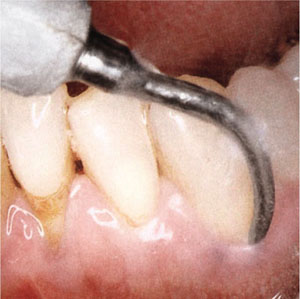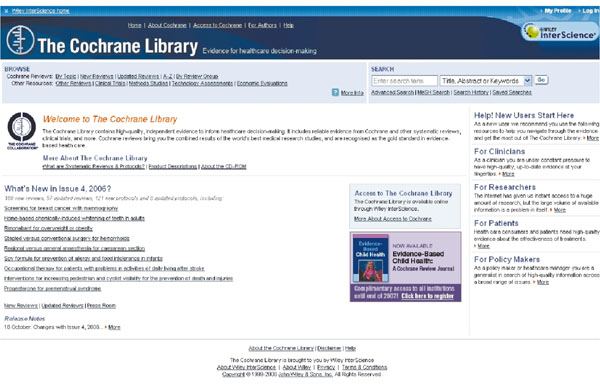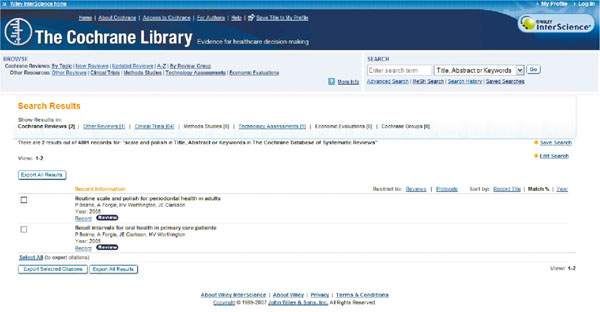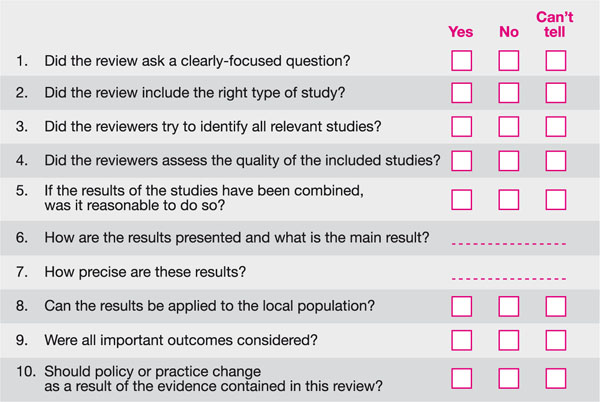Chapter 5
Cochrane Reviews
Aim
The aim of this chapter is to show the reader how to find and appraise Cochrane systematic reviews using the Cochrane Library and introduce them to the Cochrane Collaboration and Cochrane Oral Health Group.
Outcomes
After completing this chapter readers should be aware of the Cochrane Collaboration, Library and Oral Health Group and have ten questions to help them appraise a systematic review.
Finding and Assessing Cochrane Systematic Reviews
Guidelines are unlikely to be available for every clinical situation in dentistry. Systematic reviews which summarise the available evidence are more widely available and cover a wide range of topics. Systematic reviews prepared by the Cochrane Collaboration are the highest quality systematic reviews available. Here we show you where to look for them and how to assess them.
Scenario C
The practice has just increased its fees and a regular attender has asked what the benefits are of the scale and polish they receive every time they come for a check-up.
Scenario D
A mother has read on the internet about plastic coatings to protect children’s teeth from decay and has asked you whether they work and how long they last.
Scenario E
You go to a postgraduate lecture and hear about a new non-invasive technique involving the use of ozone to prevent dental decay. You wonder whether you should invest in the expensive equipment required.
Scenario F
Your practice sells a range of oral health products. A company rep comes to the practice to discuss over lunch their new powered toothbrush. He claims that it is the only one with evidence that it is superior to a manual brush.
If you didn’t write down your answers to scenarios C–D before you read the chapter then consider them now. As before, the first stage is the ASK.
Scenario C

Fig 5-1 Scenario C, scale and polish.
|
The practice has just increased its fees and a regular attender has asked what the benefits are of the scale and polish he receives every time he comes for a check-up. |
|||
| Population | Intervention | Comparison | Outcomes |
| Adults (regular attenders) | Scale and polish | No scale and polish | Improved gingival health Reduction in periodontal disease BOP; pocket depth; attachment loss Quality of life measures |
In this case you may also like to consider disadvantages as some patients don’t like having scale and polish, so you should also consider pain and postoperative discomfort!
ACQUIRE
Scale and polish is a specific treatment or intervention – for specific interventions or treatments the Cochrane Library (see page 115) is a good place to start (Fig 5-2).

Fig 5-2 The Cochrane Library homepage.
Searching the Cochrane Library is similar to searching most internet sites. The home page has a simple search box, but a more advanced searching facility is available.
Putting the term “scale and polish” in the simple search box and pressing search will bring up only two references as seen in Fig 5-3. Scale and polish is such a specifically dental term that using the simple search strategy is sufficient.

Fig 5-3 The Cochrane Library – showing the scale and polish search.
A small  image shows that a review is available and when the hypertext word record is clicked on, the review abstract is shown. Scrolling down to the bottom of the abstract will enable you to read the authors’ conclusions and, at the end, a plain language summary (see Box 5-1).
image shows that a review is available and when the hypertext word record is clicked on, the review abstract is shown. Scrolling down to the bottom of the abstract will enable you to read the authors’ conclusions and, at the end, a plain language summary (see Box 5-1).
Box 5-1 Routine scale and polish for periodontal health in adults
Authors’ conclusions
The research evidence is of insufficient quality to reach any conclusions regarding the beneficial and adverse effects of routine scaling and polishing for periodontal health and regarding the effects of providing this intervention at different time intervals. High-quality clinical trials are required to address the basic questions posed in this review.
Plain language summary
The effects on periodontal health of a routine scale and polish and of providing this intervention at different time intervals are unclear.
Many dentists and hygienists regularly provide scaling and polishing for patients, even if those patients are considered to be at low risk of developing periodontal (gum) disease. The trials included in this review were judged to be of poor quality. The research evidence was of insufficient quality to reach any conclusions regarding the beneficial and adverse effects of routine scaling and polishing for periodontal health and regarding the effects of providing this intervention at different time intervals.
Beirne P, Forgie A, Worthington HV, Clarkson JE. Routine scale and polish for periodontal health in adults. Cochrane Database of Systematic Reviews 2005, Issue 1. Art. No.: CD004625. DOI: 10.1002/14651858.CD004625.pub2.
Note: Within the confines of this Cochrane review a “routine scale and polish” is defined as scaling and/or polishing of the crown and root surfaces of teeth to remove local irritational factors (plaque, calculus, debris and staining), that does not involve periodontal surgery or any form of adjunctive periodontal therapy such as the use of chemotherapeutic agents or root planing.
Once you have identified a review to answer your question it would normally need to be appraised before you apply it to your patients. Cochrane reviews are of high quality, being conducted according to strict protocols with high standards of peer review and can therefore be accepted as best evidence. The abstracts of Cochrane reviews provide much more information than a normal abstract so are usually sufficiently detailed to give you a rapid answer to your clinical problem. In the UK and several other countries the whole review can be read online or downloaded in PDF format (access to the Cochrane Library varies from country to country – see (www3.interscience.wiley.com/cgi-bin/mrwhome/106568753/ AccessCochraneLibrary.html) for details.
APPRAISE
While Cochrane reviews can be accepted as best evidence it is useful to consider how you would appraise a review. A number of different appraisal tools are available on the internet. One such set are those developed by CASP, the Critical Appraisal Skills Programme (www.phru.nhs.uk/Pages/PHD/resources. htm), which has been helping to develop an evidence-based approach in health and social care, working with local, national and international groups.
For reviews CASP has developed 10 questions (Fig 5-4) adapted from a paper by Oxman et al. (1994). The questions address three broad issues:
-
Is the study valid?
-
What are the results?
-
Will the results help locally?

Fig 5-4 CASP 10 questions to help you make sense of reviews.
Questions 1 and 2 are designed to be screening questions and if you answer no to both of these it is unlikely to be worth continuing. Questions 3, 4 and 5 address the validity of the study. Questions 6 and 7 identify the results of the study, while the last three questions are important to help you decide whether you can and should use the information to amend your practice in light of the evidence presented.
APPLY
Stay updated, free dental videos. Join our Telegram channel

VIDEdental - Online dental courses


